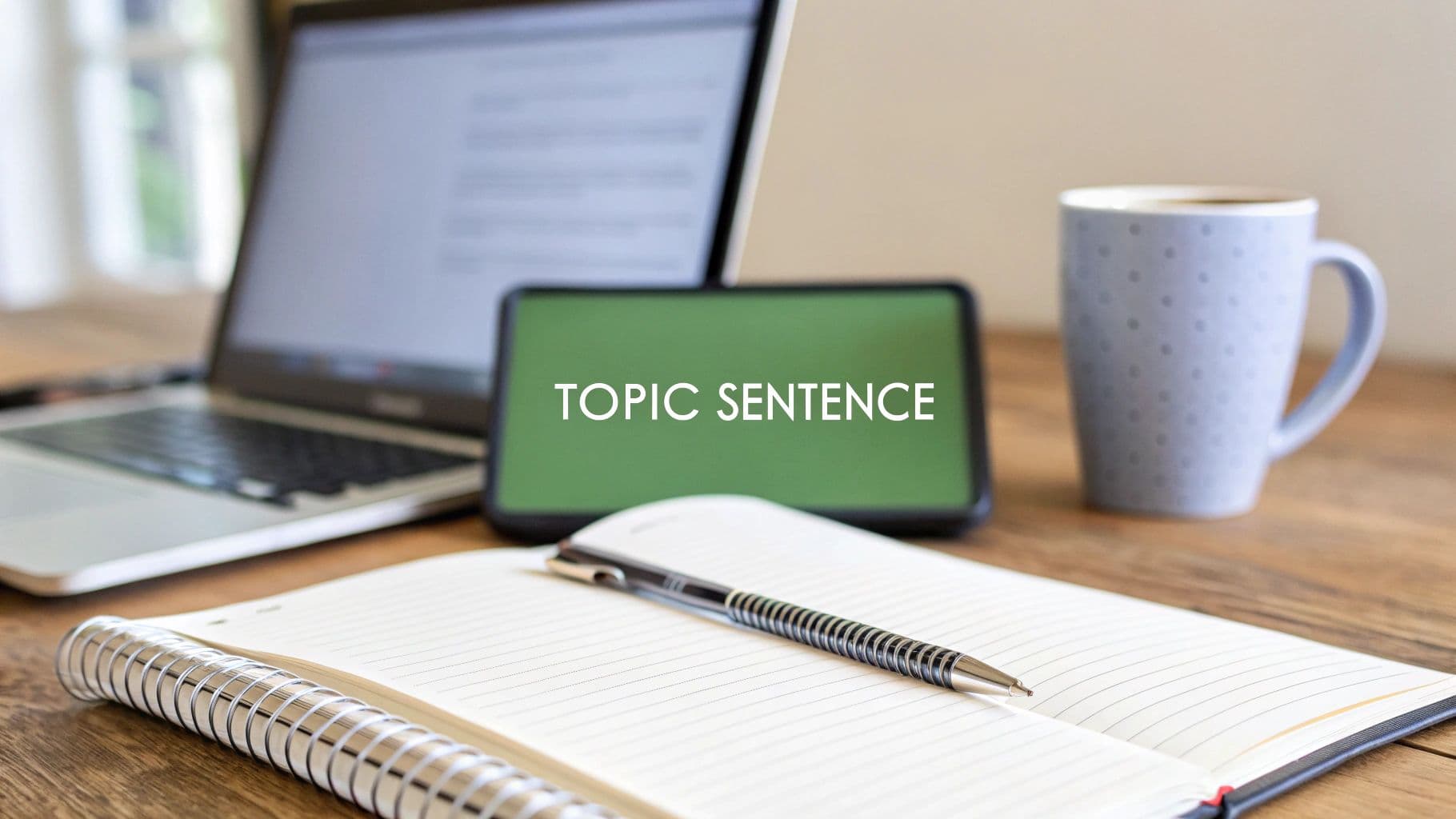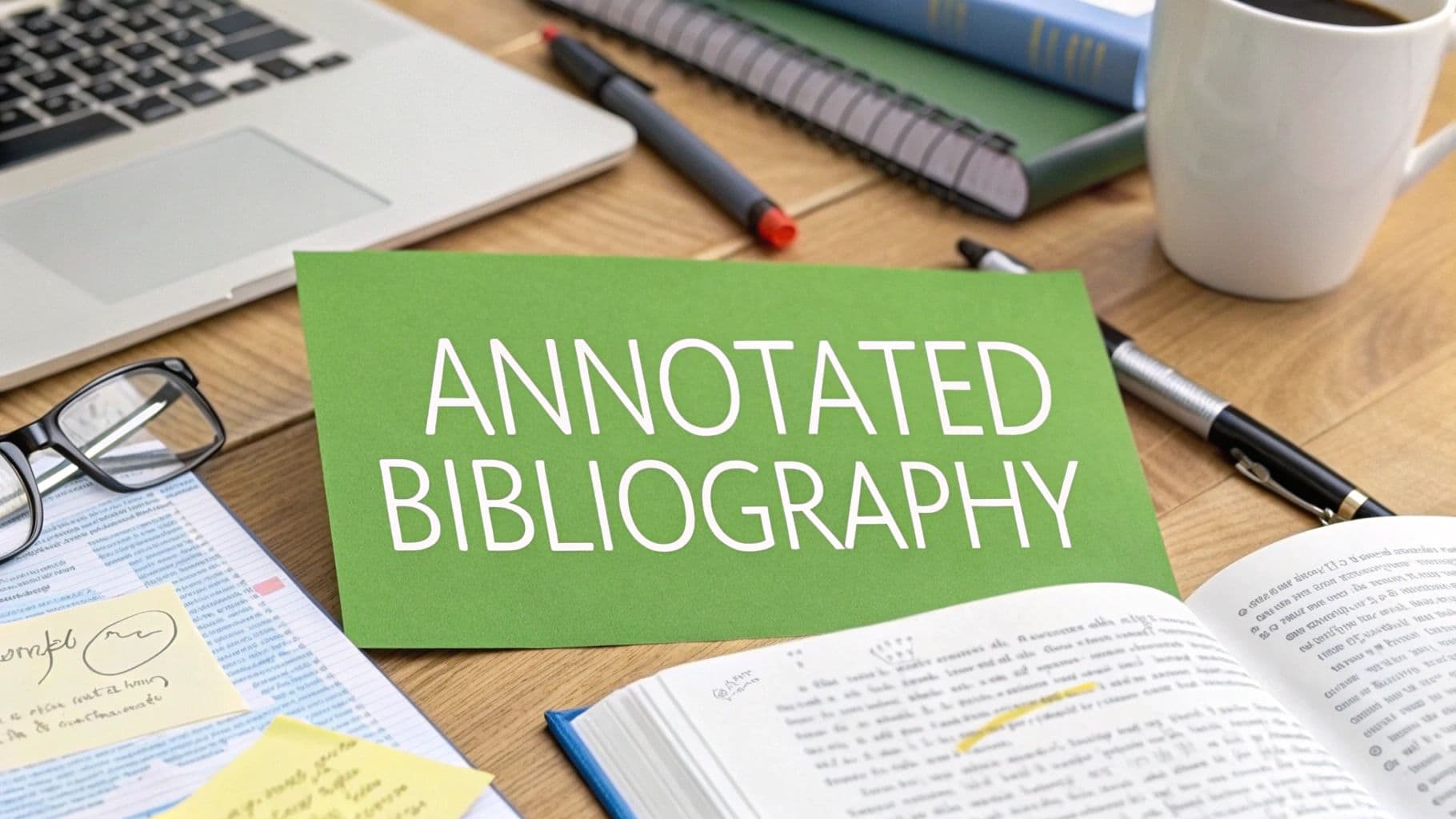
6 Essential Tips for Avoiding Plagiarism in 2025
July 9, 2025
In today's fast-paced academic and professional settings, upholding intellectual integrity is more critical than ever. Plagiarism, whether intentional or accidental, carries serious consequences that can affect grades, damage professional reputations, and limit future opportunities. More importantly, learning how to avoid it is fundamental to developing strong, ethical writing habits that show respect for others' work and highlight your own unique insights.
Many writers find it challenging to navigate the nuances of proper citation, master the art of effective paraphrasing, and seamlessly integrate source material without losing their own voice. This guide demystifies the process by providing actionable strategies. We will offer six comprehensive tips for avoiding plagiarism, moving beyond generic advice to equip you with the practical tools and techniques needed to write with confidence and integrity. From recognizing the different forms plagiarism can take to using technology as a proactive safeguard, these insights will help you build a solid foundation for all your writing projects. You will learn precisely how to manage your sources, quote effectively, and present original, high-quality work every time.
1. Understand Different Types of Plagiarism
The most fundamental tip for avoiding plagiarism is to first understand that it’s not a single, simple offense. Plagiarism exists on a spectrum, ranging from blatant theft of intellectual property to more subtle, often unintentional, mistakes in citation and paraphrasing. Recognizing these nuances is the crucial first step toward producing original, ethically sound work. Without a clear map of what constitutes plagiarism, you risk stumbling into it accidentally.
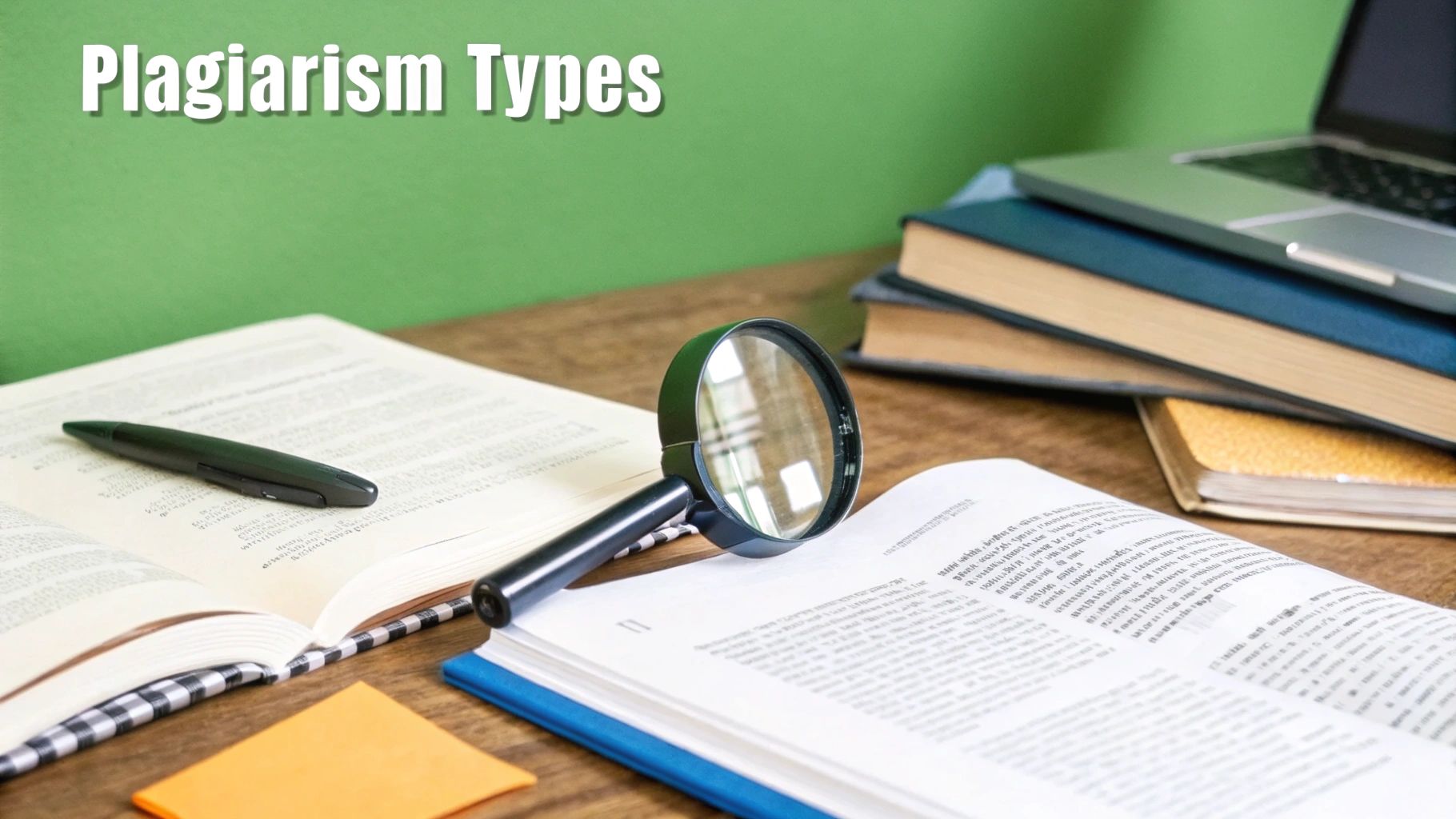
Many writers think of plagiarism as only copying and pasting text from a source without quotes, but the reality is far more complex. Understanding the specific categories helps you self-audit your writing with greater precision. For instance, Turnitin’s "Plagiarism Spectrum" breaks down different forms of academic dishonesty, which provides a helpful framework for writers.
Common Forms of Plagiarism to Know
To effectively avoid these pitfalls, familiarize yourself with the primary types of plagiarism:
- Verbatim (or Direct) Plagiarism: This is the most recognized form. It involves copying another person's work word-for-word without using quotation marks and providing a proper citation.
- Paraphrasing Plagiarism: Simply changing a few words in a sentence or rearranging its structure while retaining the core ideas of the original source is plagiarism if you fail to attribute it. Proper paraphrasing requires you to process the information and explain it in your own unique words and sentence structure, always followed by a citation.
- Mosaic Plagiarism (Patchwriting): This involves weaving together phrases, sentences, and ideas from various sources into your own writing without correctly citing all of them. It creates a "mosaic" of unattributed text that falsely appears to be original thought.
- Self-Plagiarism: Reusing significant portions of your own previously submitted work for a new assignment without permission from your instructor is considered a form of academic dishonesty. Each assignment is expected to be a new, original piece of work.
Actionable Steps for Implementation
To build a strong foundation in academic integrity, actively engage with these concepts. A great way to start is by exploring your own institution's policies, as definitions and consequences can vary. For a deeper dive, review these Academic Integrity Guidelines which offer comprehensive information. Many universities, like MIT and Harvard, provide excellent online tutorials and handbooks with clear examples. Practice identifying different plagiarism types in sample texts to sharpen your detection skills. This proactive learning is a key part of our tips for avoiding plagiarism because it transforms abstract rules into practical knowledge.
2. Master Proper Citation Formats
Beyond simply knowing what plagiarism is, you must master the practical mechanics of giving credit. Learning and consistently applying proper citation formats is the essential, non-negotiable step that demonstrates your academic honesty. Each style, whether it's APA, MLA, or Chicago, has its own precise rules for how to acknowledge your sources. Mastering the format required for your discipline is fundamental to ensuring all borrowed ideas, quotes, and paraphrases are properly attributed, which is one of the most effective tips for avoiding plagiarism.
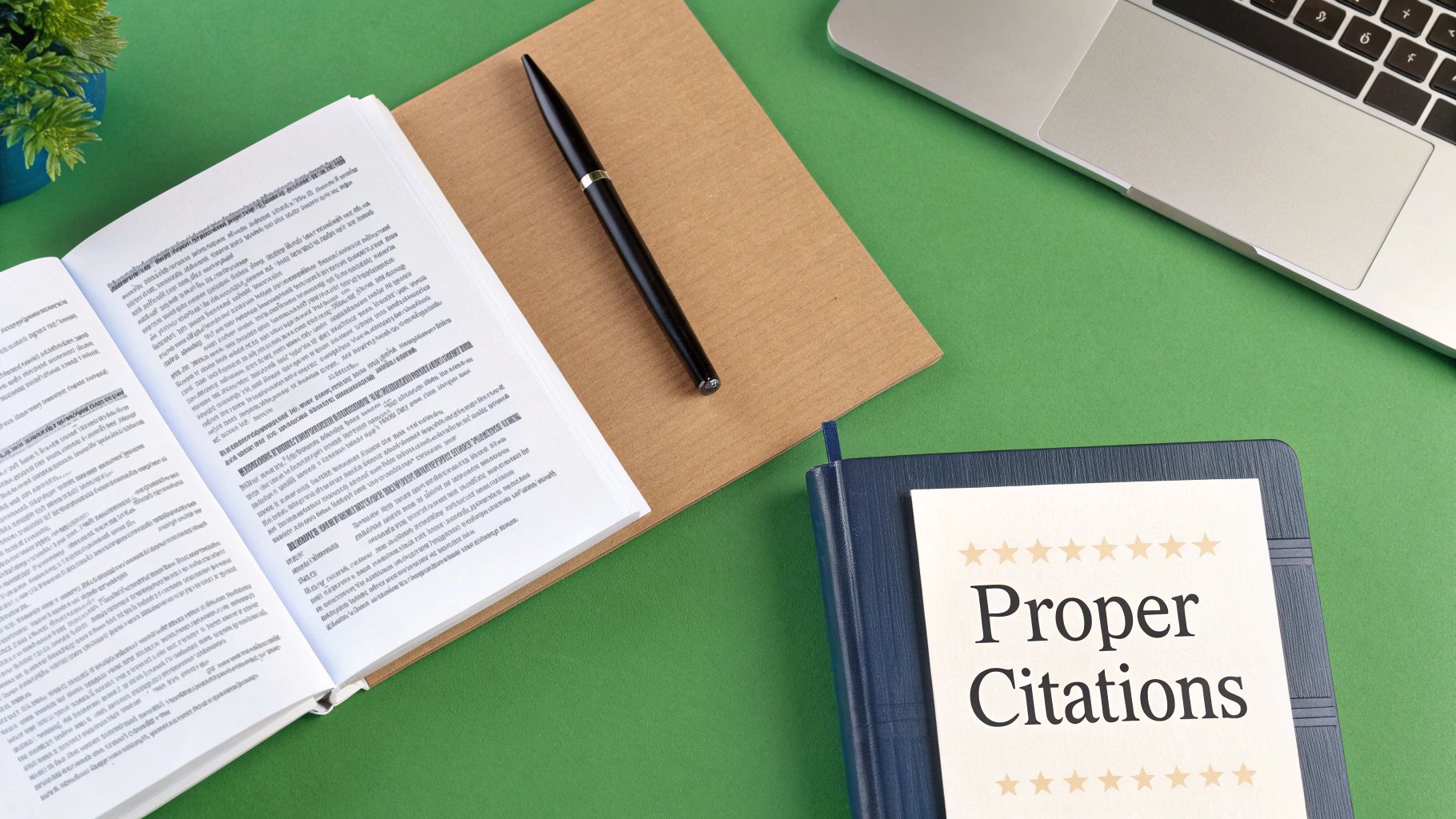
Failing to adhere to the correct format isn't just a minor error; it can be interpreted as a careless attempt to obscure a source, leading to accusations of plagiarism. Think of citation styles as the official languages of academic credit. The Modern Language Association (MLA), American Psychological Association (APA), and the editors of the Chicago Manual of Style have established these systems to create a universal standard for citing work, making it easy for readers to trace your intellectual path back to the original sources.
Common Citation Styles to Know
While there are hundreds of specific citation styles, most academic and professional writing relies on a few core formats. Familiarity with the one most relevant to your field is critical.
- APA (American Psychological Association): Predominantly used in the social sciences, education, and psychology. It emphasizes the date of publication in its in-text citations, such as (Smith, 2021).
- MLA (Modern Language Association): The standard for the humanities, including literature, arts, and philosophy. It uses an author-page number format for in-text citations, like (Smith 42).
- Chicago (A/B): A flexible style with two systems. The Notes and Bibliography system (A) is common in history and the arts, using footnotes or endnotes. The Author-Date system (B) is closer to APA and used in sciences.
- AMA (American Medical Association): Used extensively in medical and scientific journals, such as the Journal of the American Medical Association. It uses a numbered, sequential citation system in the text.
Actionable Steps for Implementation
To make citation second nature, integrate it directly into your writing process. Start by bookmarking a comprehensive resource like the Purdue OWL, which offers free, detailed guides for all major styles. For efficiency, use citation management software like Zotero or Mendeley; these tools automatically format citations and build your reference list in the correct style as you write. Practice by creating your own templates for common source types (e.g., journal article, book, website) in your required format. This preparation is a core element of any effective strategy to avoid plagiarism, turning a tedious task into a manageable habit. For a more comprehensive look, you can review this academic writing style guide to deepen your understanding.
3. Develop Effective Paraphrasing Skills
Mastering the art of paraphrasing is one of the most powerful tips for avoiding plagiarism. Paraphrasing is the practice of rephrasing someone else's ideas into your own unique words and sentence structure while preserving the original meaning. It goes far beyond simply swapping out a few synonyms; true paraphrasing demonstrates that you have deeply understood the source material and can articulate its core concepts independently, all while giving proper credit to the original author.
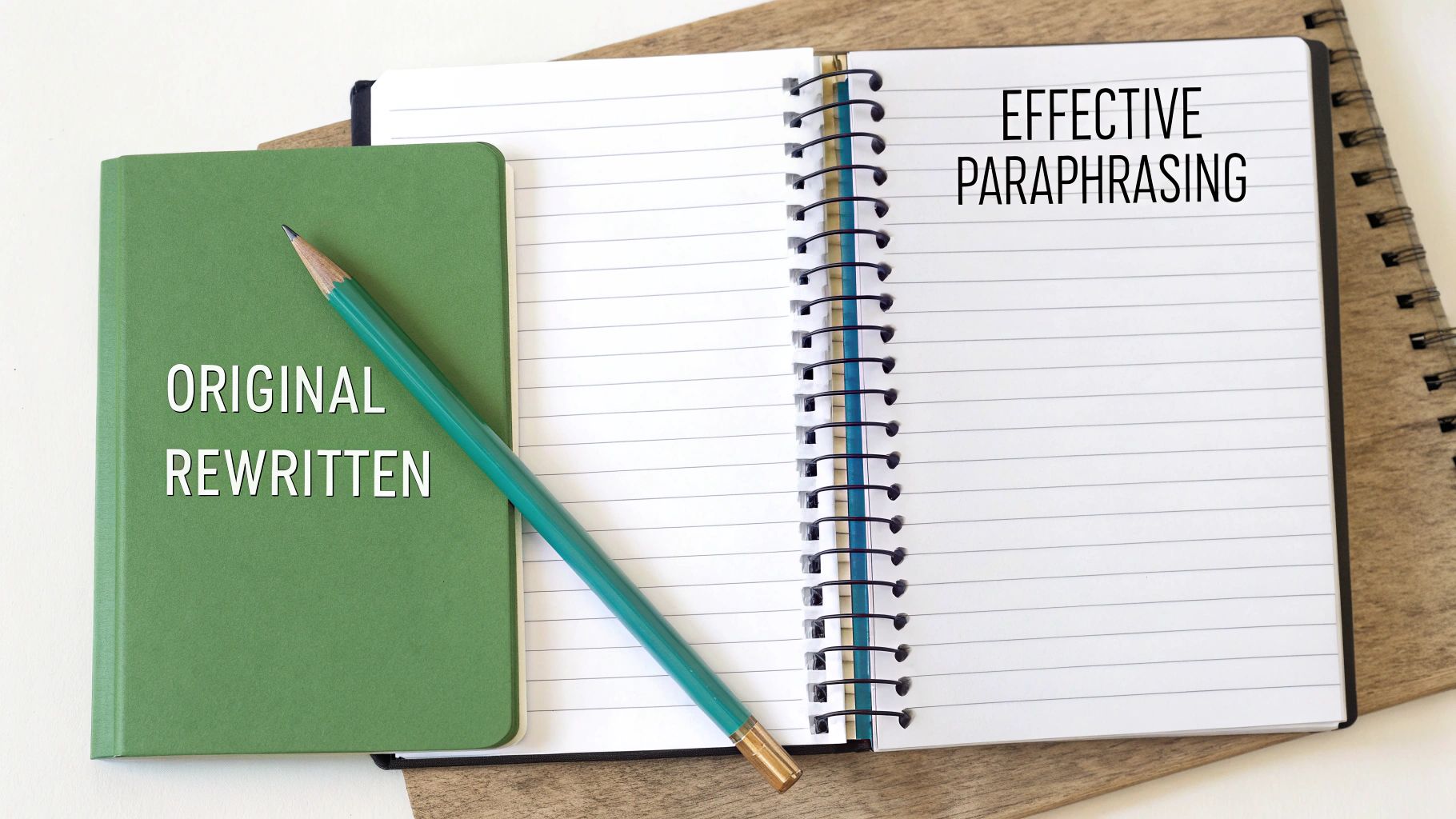
This skill is essential for seamlessly integrating evidence and expert opinions into your work without over-relying on direct quotes. Effective paraphrasing shows a higher level of engagement with your sources and strengthens your own authorial voice. Writing centers and academic instructors consistently emphasize this skill because it proves comprehension, not just the ability to copy text.
Key Strategies for Effective Paraphrasing
To paraphrase correctly and avoid accidental plagiarism, you must fundamentally change the original text's structure and wording. Here are some proven strategies:
- Read for Understanding: Read the original passage several times until you fully grasp its meaning. You cannot explain something in your own words if you do not understand it first.
- Write from Memory: Put the original source away or cover it up. Then, write out the idea from memory, focusing on the concept rather than the specific words and sentences used by the author.
- Change Sentence Structure: Do not just replace words with synonyms (a practice called "patchwriting"). Break long sentences into shorter ones, combine short sentences, or change the sentence from active to passive voice, or vice versa.
- Compare and Cite: Once you have your paraphrased version, compare it to the original to ensure you have maintained the meaning and avoided using the same phrases or sentence patterns. Most importantly, always include a citation to the original source.
Actionable Steps for Implementation
To build this crucial skill, you must practice intentionally. Start by finding a short paragraph from a scholarly article or book. Apply the strategies above, and don't be afraid to try multiple versions. For a great visual demonstration of this process, the video below offers clear techniques.
You can also use exercises from resources like the Harvard Writing Center or the University of Wisconsin-Madison’s Writer’s Handbook. While tools like QuillBot can be helpful starting points, avoid over-reliance on them, as they can sometimes miss the nuance of the original text. Integrating paraphrasing into your writing process is a core element of strong academic work, and you can learn how these skills contribute to writing better essays on naturalwrite.com. This proactive practice will make proper attribution second nature.
4. Keep Detailed Research Notes and Source Records
One of the most practical and preventative tips for avoiding plagiarism is to develop a meticulous note-taking system from the very beginning of your research process. Accidental plagiarism often happens not out of dishonesty, but from disorganization. When your own thoughts, paraphrased ideas, and direct quotes from sources are jumbled together without clear distinction, it becomes easy to mistakenly present someone else’s work as your own. A disciplined approach to recording information ensures every idea is properly attributed.
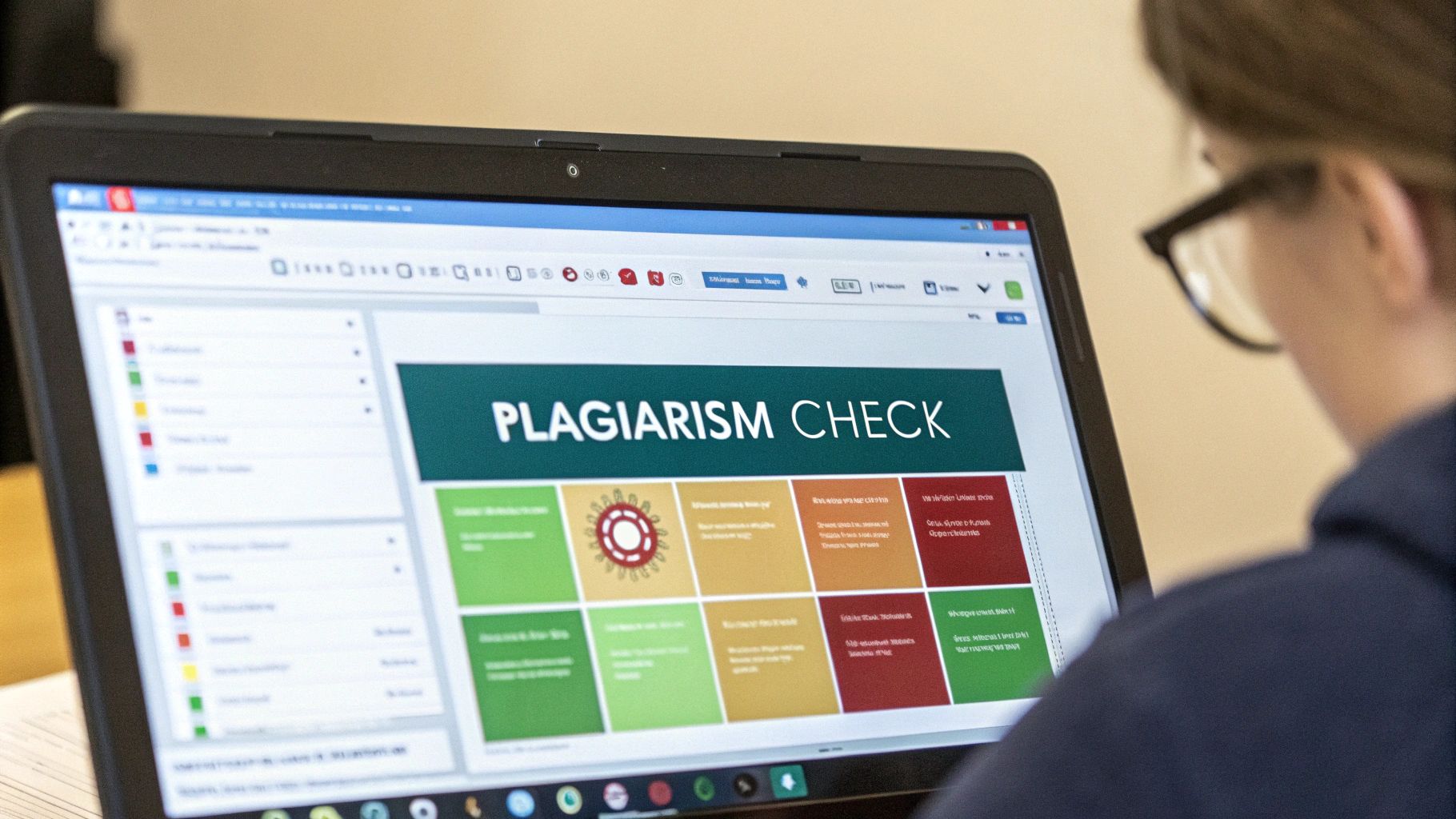
This method, long championed by library science professionals and graduate school writing programs, transforms research from a chaotic scramble into a structured workflow. By creating a clear separation between your original analysis and the information you gather, you build a reliable foundation for your final draft. This organized record serves as your single source of truth, preventing the common "I know I read this somewhere, but where?" dilemma that leads to uncited claims.
Common Note-Taking Systems for Research
To effectively manage your research, adopt a system that works for you. Several methods are particularly well-suited for academic and professional writing:
- Dedicated Research Journal: Whether digital or physical, a research journal is a space to log sources, summarize findings, and reflect on how different pieces of information connect. This method is popular among graduate students and professional researchers.
- Adapted Cornell Note-Taking System: While traditionally used for lectures, this system can be modified for research. Use the main column for notes from a source, the smaller column for your own keywords and questions, and the bottom summary section to paraphrase the source's key argument in your own words, with the full citation at the top.
- Digital Knowledge Management Tools: Applications like Notion, Obsidian, and Evernote are excellent for creating a "second brain." They allow you to create dedicated pages for each source, use tags to connect related ideas, and embed direct links, making source management seamless. Legal professionals often use similar sophisticated databases to maintain detailed case citation records.
Actionable Steps for Implementation
To put this into practice, start by choosing a system and sticking to it. The key is consistency. For every source you consult, immediately record all necessary bibliographic information, including the author, title, publication date, and for online sources, the URL and access date. Use a specific, visual way to distinguish your thoughts from source material. A great starting point is to read this guide on Effective Note-Taking Strategies from the UNC-Chapel Hill Writing Center. This approach is a cornerstone of our tips for avoiding plagiarism because it stops accidental unattributed use of information before it can even happen.
5. Use Plagiarism Detection Tools Proactively
Relying on technology as a final check is a powerful strategy, but using plagiarism detection tools proactively transforms them from a simple gatekeeper into a valuable learning instrument. These tools scan your text against vast databases of academic papers, web pages, and published works to highlight passages that match existing content. By incorporating these checks into your writing process, you can identify potential issues long before a deadline, giving you time to correct mistakes and strengthen your understanding of proper citation.
Many writers view these tools with anxiety, seeing them only as a mechanism for catching dishonesty. However, a proactive approach reframes them as a safety net. They can pinpoint areas where a paraphrase is too close to the original source or where you may have forgotten a citation entirely. This feedback loop is an essential part of developing strong academic habits and is one of the most effective tips for avoiding plagiarism in a high-tech world.
Common Tools and Their Applications
To integrate this practice effectively, it helps to know the landscape of available tools and how they are typically used:
- Turnitin: Widely used by universities, Turnitin is often the final submission portal. Many institutions allow students to submit drafts to view a "Similarity Report" beforehand, which is an excellent opportunity for self-correction.
- Grammarly: More than just a grammar checker, Grammarly's premium version includes a robust plagiarism checker. It's ideal for running quick scans as you write and edit, catching potential issues in real-time within your document.
- Copyscape: A favorite among web content creators and publishers, Copyscape excels at scanning for duplicate content across the internet. It’s particularly useful for bloggers and marketers ensuring their work is unique.
- Quetext: Offering both free and paid versions, Quetext is a popular choice for students who want to self-check their work before submission. Its detailed reports help identify the sources of matched text.
Actionable Steps for Implementation
To get the most out of these powerful resources, shift your mindset from last-minute compliance to ongoing improvement. Instead of waiting until your paper is finished, run a check after completing a heavily researched section. Use the generated report not just as a pass-fail metric, but as a diagnostic tool. Discuss any confusing results with your instructor; they can help you interpret the similarity score, which often includes properly cited quotes or common phrases that are not actually plagiarism. For a great starting point, this Guide to Using Plagiarism Checkers provides a comprehensive overview of how to interpret results effectively. Using these tools as part of your writing workflow reinforces good habits and ensures the integrity of your final submission.
6. Learn When and How to Quote Directly
While paraphrasing is a vital skill, knowing when and how to use a direct quotation is equally important for maintaining academic integrity. Direct quotes should be used sparingly but strategically, reserved for moments when the original author's exact words are essential for accuracy, authority, or impact. Over-relying on quotes can weaken your argument, but using them effectively demonstrates deep engagement with your source material and is a key part of our tips for avoiding plagiarism.
Mastering this skill involves understanding when paraphrasing is insufficient and learning to integrate quotes smoothly into your own writing. A well-placed quote can provide powerful evidence, add credibility from an expert, or preserve a particularly memorable or precise turn of phrase. The goal is to use the source's voice to enhance your own, not to let it dominate your work.
When to Use Direct Quotes
While not an exhaustive list, certain scenarios are particularly well-suited for direct quotations rather than paraphrasing. Using quotes in these situations ensures you represent the source material with the highest fidelity.
- For Authoritative Definitions: When a key term is defined by a leading expert or a foundational text, quoting the definition directly provides clarity and authority.
- For Powerful or Memorable Language: If the original author has expressed an idea in a particularly eloquent, concise, or impactful way, quoting it preserves that power. Paraphrasing might dilute the original meaning or effect.
- When Analyzing Specific Wording: In fields like literary criticism, legal analysis, or historical studies, your argument may depend on the specific words, phrasing, or tone used by the original author.
- To Present Evidence: Quoting data, statistics, or findings directly from a research paper can add undeniable weight to your claims, leaving no room for misinterpretation.
Actionable Steps for Implementation
To properly incorporate direct quotations, you must do more than simply copy and paste text with quotation marks. The quote needs to be woven into the fabric of your own argument. Start by using signal phrases (e.g., "According to Dr. Smith...") to introduce the quote and provide context. This alerts the reader that you are about to present someone else’s words.
Crucially, always follow a direct quotation with your own analysis or explanation. Explain to your reader why the quote is significant and how it supports the point you are making. A quote should never stand alone as a complete sentence or replace your own argument; it should serve as evidence for it. Finally, always double-check the specific formatting rules for block quotes (typically longer quotations) required by your citation style (APA, MLA, Chicago, etc.), as these are often treated differently from shorter, in-line quotes.
6 Essential Tips Comparison
| Item | Implementation Complexity 🔄 | Resource Requirements ⚡ | Expected Outcomes 📊 | Ideal Use Cases 💡 | Key Advantages ⭐ |
|---|---|---|---|---|---|
| Understand Different Types of Plagiarism | Moderate – involves learning various types and nuances | Low – mostly study and awareness | High – better detection and prevention of plagiarism | Academic integrity education, awareness programs | Comprehensive understanding, proactive prevention |
| Master Proper Citation Formats | Moderate to High – multiple styles, detailed rules | Medium – access to style guides and software | High – accurate source attribution and professionalism | Academic writing, publishing, formal papers | Clear framework, standardized scholarly communication |
| Develop Effective Paraphrasing Skills | High – requires deep comprehension and rewriting skills | Medium – practice materials and possibly tools | High – smooth integration of sources, demonstration of understanding | Essay writing, research synthesis, academic papers | Shows analytical skills, avoids over-quoting |
| Keep Detailed Research Notes and Source Records | Moderate – requires ongoing discipline | Medium to High – note-taking tools and time | High – prevents accidental plagiarism, efficient research | Long-term projects, complex research, thesis work | Prevent accidental plagiarism, saves writing time |
| Use Plagiarism Detection Tools Proactively | Low – software use is straightforward | Medium – subscription or access to tools | Medium to High – early identification of plagiarism risks | Pre-submission checking, student self-review | Immediate feedback, educational guidance |
| Learn When and How to Quote Directly | Moderate – mastering correct usage and integration | Low – mostly knowledge and practice | High – accurate use of quotes enhances authority | Literary analysis, legal writing, scientific papers | Preserves original meaning, authoritative support |
Writing Ethically in the Age of AI
Navigating the landscape of academic and professional writing requires more than just good ideas; it demands a steadfast commitment to integrity and originality. The journey from initial research to final submission is a process of building upon the work of others while forging your own distinct voice. By embracing the strategies we've explored, you're not merely dodging the negative consequences of academic dishonesty, but actively cultivating the skills that define a credible, respected, and effective communicator.
This article provided a comprehensive toolkit filled with actionable tips for avoiding plagiarism. We've moved beyond the simple directive to "cite your sources" and delved into the practical mechanics of how to do so with precision and purpose.
Key Takeaways for Ethical Writing
Let’s distill the core principles into a final, actionable summary:
- Awareness is Your First Defense: Understanding the full spectrum of plagiarism, from blatant copy-paste to subtle mosaic plagiarism, empowers you to recognize and prevent it in your own work.
- Systematic Organization is Crucial: Meticulous note-taking and source management aren't just administrative tasks; they are foundational practices that prevent accidental source misattribution and create a clear audit trail for your research.
- True Paraphrasing is an Art: Mastering the skill of paraphrasing means going beyond swapping out a few words. It involves internalizing an idea, processing it through your own critical lens, and articulating it in a new, unique structure that reflects your genuine understanding.
- Tools Are Allies, Not Crutches: Proactively using plagiarism checkers and citation managers transforms them from last-minute safety nets into integral parts of a rigorous writing workflow. They help you catch errors before they become problems.
The Modern Challenge: AI and Originality
The rise of AI writing assistants introduces a powerful, yet complex, new dimension to content creation. These tools can be incredible assets for overcoming writer's block, structuring thoughts, and generating initial drafts. However, their output is, by its nature, a sophisticated synthesis of existing data. Relying on it without critical review, substantial rewriting, and proper attribution can inadvertently lead you into the territory of plagiarism.
The ultimate responsibility for originality always rests with you, the author. The principles of ethical writing have not changed. You must still verify every claim, properly attribute every borrowed idea, and ensure the final product is a testament to your own intellectual effort. Think of AI as a research assistant, not the final author. Its output should be the raw material you mold, refine, and infuse with your unique perspective, not the finished sculpture. Mastering these tips for avoiding plagiarism is more important than ever, providing a framework to use these new technologies responsibly and ethically. By doing so, you build a foundation of trust with your audience and solidify your reputation as a writer of integrity and skill.
Ready to ensure your AI-assisted drafts are original and sound genuinely human? Natural Write helps you ethically refine AI-generated text, transforming robotic content into natural, plagiarism-free prose that reflects your own voice. Polish your work with confidence and maintain your academic and professional integrity by visiting Natural Write today.
